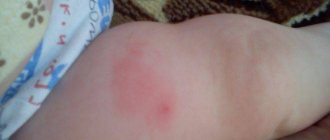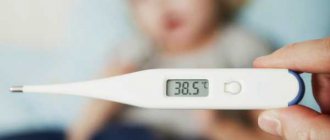Pharmacological properties of the drug Human immunoglobulin
Immunobiological agent, highly purified polyvalent human immunoglobulin. Immunoglobulin contains about 90% monomeric IgG and a small fraction of decomposition products, dimeric and polymeric IgG and IgA, IgM in trace concentrations. The distribution of IgG subclasses in it corresponds to their fractional distribution in human serum. It has a wide range of opsonizing and neutralizing antibodies against bacteria, viruses and other pathogens. In patients with primary or secondary immunodeficiency syndromes, it provides replenishment of missing IgG class antibodies, which reduces the risk of developing infection. In some other immune disorders, such as idiopathic (immune origin) thrombocytopenic purpura and Kawasaki syndrome, the mechanism of clinical effectiveness of immunoglobulin is not entirely clear. After IV infusion, a redistribution of immunoglobulin occurs between the blood plasma and the extravascular space, and equilibrium is achieved after approximately 7 days. Antibodies present in exogenous immunoglobulin have the same pharmacokinetic characteristics as antibodies in endogenous IgG. In individuals with normal serum IgG levels, the biological half-life of immunoglobulin averages 21 days, while in patients with primary hypogammaglobulinemia or agammaglobulinemia, the half-life of total IgG averages 32 days (however, there is significant individual variation that may be important when establishing a dosage regimen for a particular patient).
Immunoglobulins, vaccinations and children's rights (continued)
Our regular readers probably already understood everything, however, a brief educational lesson for the rest. CMV is a cytomegalovirus. A virus to which antibodies are found in the vast majority of the adult population (more than 98% in cities). Again, for most, CMV does not pose any threat, since normal human immunity copes with it without much difficulty. For people with immunodeficiency (AIDS, tumor chemotherapy, etc.) CMV is very dangerous. In case of acute, recent infection, IgM appears in the blood - this is the so-called. early antibodies. Subsequently, IgM disappears and is replaced by full-fledged, mature antibodies - IgG. The presence of IgG indicates that there are protective cells in the blood against a specific infection. Those. in the circumstances set out in the letter, we are not talking about immunity in general, but about immunity specifically to CMV, i.e. IgG to CMV is detected. There is IgG, but no IgM - this is the most optimal situation, this means that there is no acute illness, that the body has had experience communicating with this virus and has developed protection against it. Everything described is described in the most simplified form, however, this is the ABC of medicine. A person with a doctor's diploma cannot not know this. When a 2-month-old child has IgG to CMV, but no IgM, this means that full-fledged mature antibodies to CMV, which the child received from the mother, were found in the blood. Those. the mother once had contact with CMV, she has antibodies to it, these antibodies protect the mother, she passes them on to the child, and they protect the child for a certain time. Over time, the concentration of antibodies decreases, which, in fact, is confirmed by tests that are occasionally performed on the child. Question: what in this situation could be a reason for a child not to be vaccinated? No answer. Those. There is no reasonable explanation accessible to common sense. If a doctor has banned vaccinations because he does not know what IgG to CMV is, then, firstly, he is not a doctor, and secondly, where are all these thousands of regulatory bodies, departments, advanced training institutes, and certification commissions looking? If a doctor knows what IgG to CMV is, but has banned vaccinations (out of malice, out of harm, because he has a percentage of the laboratory that conducts research on CMV), then this is pure crime, it is beyond good and evil. Now watch what happens next. And note, this is not happening in some remote place, but in the Leningrad region! Mom runs to the doctors. Mom asks: vaccinate my child! I'm afraid, protect us! There's measles in the city! We want to go to kindergarten! Graft!!! But the doctors say no! Even special specialists - immunologists, for whom all these IgG and IgM are just a force of nature, even infectious disease specialists who are just aces in IgG and IgM, even especially honored pediatricians in private clinics, who certainly should understand these IgG and IgM, so that's all they say no! I wouldn’t like to think that they all don’t know either... But why, if one, if I may say so, a doctor, wrote not stupidity, but simply stupidity - i.e. simple and obvious stupidity, why can’t it be corrected - corrected with one phone call - they say, hello, Maryivanna, this is immunologist Ivanov, you wrote a shameful stupidity there, so we will still vaccinate the child, and you correct it, otherwise it’s a shame for the profession ours... But that was not the case! Everyone unanimously says: whoever said this, let him now say differently. And our business is the side! I just want to howl and cry. Well, you can’t do that, completely without shame and conscience, just because they, the normal and honest ones, “...are so scared to argue with a doctor! What if I have no medical education after all! - wrong..."... Let's look at all this again from a very specific angle. So, there is such a disease - whooping cough. A disease that is fatal for children in the first year of life, and very dangerous, fraught with serious complications for young children. The child HAS THE RIGHT to be protected from this disease. This right is GUARANTEED to the child by the state. The state included the whooping cough vaccine in the vaccination schedule and thereby solemnly promised that every child would receive a free whooping cough vaccine at the age of three months. Someone calling himself a doctor deprived the child of this right. We are already 14 months old. We're lucky so far. What will happen next? Mom doesn't understand that this is a crime. And all these infectious disease specialists (!!), immunologists (!!!), pediatricians - how are they? Don't they understand either? Or do they just not want to get involved? But what does the child have to do with it? Does this state not understand that every medical exemption from vaccinations is actually depriving a child of the right to receive protection from a life-threatening infectious disease? If he understands, then why is there no system to protect children from such doctors? Why can't one doctor correct the blatant and obvious incompetence of another? However, it was the state that created the document called “Methodological instructions MU 3.3.1.1095-02 3.3.1. Vaccine prevention “Medical contraindications to preventive vaccinations with drugs from the national vaccination calendar” (approved by the Chief State Sanitary Doctor of the Russian Federation on January 9, 2002)” and, it goes without saying that no IgG to CMV is considered as a contraindication to vaccination. Moreover, this document clearly states: “ the use of false contraindications by a pediatrician should be considered as evidence of his incompetence in matters of immunoprophylaxis with all the ensuing measures .” It is bitter that all these measures are only on paper... It is doubly bitter that the incorrect, or inadequate, or deliberately criminal interpretation of the results of laboratory research is acquiring simply gigantic proportions. Dozens of pregnant women are in a stressful state precisely because they have IgG! To CMV, to herpes, toxoplasma, etc. And these antibodies, which throughout the civilized world are a reason for reassurance, in our country are a reason for concern and treatment!!! And when, after detecting IgG to Toxoplasma, the doctor advises you to think about an abortion... You will say - this does not happen! Happens!
In general, the conclusion is usual and traditional: until the state begins to really protect the rights of your children, you, moms and dads, are their only defenders. Learn! Learn to protect yourself, not to be late, not to do anything stupid...
***
My God! Well, where can I find the strength to read all this? I just decided to post it on the site, I open my mail, a letter. This is not the Leningrad region, this is Poltava... Fragments: “My husband and I are planning a pregnancy. And this is exactly the best and brightest event in the life of our family. We ourselves are originally from Poltava, but for the last six months we have been living in Lviv. 2 weeks ago I was in Poltava and decided to consult with my gynecologist, since we decided that, in principle, it doesn’t matter where to get tested, but it’s still easier to consult with your doctor (who knows all diseases or just tests). I passed 6 tests: ... detected CMV Ig G - 146.3 U/ml, Toxoplasma Ig G, as well as Herpes simplex Ig G (HSV) - 4.41 COl. The doctor said that 1-1.5 months before pregnancy, these 2 viruses need to be treated (the course of treatment is 14-15 days), that is, to reduce the content of these antibodies at the time of conception. It is up to us to treat or not to treat, but according to her, it would be better to do this, since the cytomegalovirus is “responsible” for the central nervous system and with a 50/50 chance a child may be born with Down syndrome or another disease associated with the nervous system. Allegedly, she knows of a case where a married couple, leading a healthy lifestyle and being healthy, decided not to lower this amount of antibodies and gave birth to a child with Down syndrome. We were confused that the gynecologist said that we don’t need to take any vitamins, we don’t need to work out our abs either (they will atrophy during pregnancy anyway), lead the same lifestyle as before, and eat right. She also did not refer me to any other specialists for examination. This was especially confusing after we watched your TV show about “Planning Pregnancy”, in which you talked about folic acid, TORCH tests for rubella, chickenpox and others, blood and urine tests, ultrasound, fluorography, vaccination, taking medications before and during pregnancy. Can I prescribe folic acid or vitamins to myself? Or is it better to go to another doctor with the existing tests and get additional ones?”
What do i do? How to explain that a doctor who supposedly treats and lowers Ig is not a doctor! How to explain that there is and cannot be any connection between CMV and Down's disease? What if the whole world recommends folic acid before pregnancy, but the great local gynecologist does not recommend it? And no one, no one cares about it! Because those who control this gynecologist know even less. And all this, the whole system - in Russia, in Ukraine - is no longer medicine. This is a disaster covered up by talking about the need to increase the birth rate! How can you increase the birth rate with such gynecologists?!
Study, girls, please!
Update from 04/03/2012 Hello, Evgeny Olegovich. You may be interested in hearing about developments. I wrote to you about CMV and the medical exemption from vaccinations. Inspired by your answer, on the advice of a lawyer neighbor, I wrote 3 identical letters asking me to explain the position of the Ministry of Health and explain to which clause of the MU about medical outlets our case corresponds. I sent it to RosZdravNadzor, to the St. Petersburg Health Committee and personally to the director of the Research Institute for Diagnostics (at the Research Institute they gave us a medical exemption). Perhaps I went too far, but I wasn’t sure where to write and just in case I wrote to everyone. And there was no faith in the response. But after 2 weeks the reaction did follow. It was different, they wrote and called me from different places, but the main thing (the letter to the director worked) was the call from the chief immunologist of St. Petersburg (NIIDI is generally the main institution in St. Petersburg for vaccination and immunology) and in a cheerful voice invited me to come to them for vaccination in the general manner . No, you don’t need to take any additional tests, just general blood and urine like everyone else. Yes, there are no grounds for medical withdrawal. No, no matter who you see, they will give you the vaccine, you are now a well-known person here, I myself want to look at you, you can be used as an example for others... Yesterday Yaroslav received his first Pentaxim. So far everything is fine, no reactions/complications. I hope it won’t happen either now or with further vaccination. I wonder what if I hadn’t written these letters? Until what age would medical withdrawal be extended? A lot of things here are like this: questions from below are not answered, but on orders from above, work immediately begins... And, if there is no other way out, the advice to everyone is not to be lazy and not be afraid to contact higher authorities and defend their rights.
Continuing the topic - the next letter.
Good afternoon Evgeny Olegovich!!!
I express my sincere gratitude to you for your work. They help a lot of people! You may be interested in reading about another case of false medical taps in St. Petersburg. I decided to write because, once again looking through the “Letters” section of your website, I accidentally came across a letter “Immunoglobulins, vaccinations and children’s rights” and an addition to it about the resolution of this story. And we are talking about the same medical and preventive institution. I have already shared my story, which I want to tell you, on Clubcom. The essence of the story is this: our service has assigned the children of employees to a large and respected medical institution, the Research Institute of Children's Infections, for additional medical care. At the beginning of the year, the personnel department collected lists of children and transferred them to the research institute, and at the beginning of the year it was necessary to undergo a medical examination there. But my daughter in February, at the age of 1.5 years, went to kindergarten and began to get sick often, so we had no time for medical examination at this research institute, since in the middle of winter and spring, during the ARVI epidemic, we took the child by public transport to a public place didn't see any reason. In May, when we once again sat at home with ARVI and did not go to the garden, we were already getting better, I decided to fill this gap and undergo this notorious medical examination before leaving for a vacation to Turkey. We went to the pediatrician. Finding out the medical history and the number of diseases recently, the doctor rolled her eyes when she heard about how many times my daughter had ARVI when she started visiting the kindergarten. I reasonably objected that I did not consider her unique in this matter, and also that since she had been sick often and a lot in 3 months (6 times), this suggests that she recovered quickly and easily, except for one time when we because of the burn, they ended up in the hospital, and from there the next day they left with bacterial bronchitis and a viral intestinal infection, but this is a separate story, which I also shared in ClubCom. Although, of course, this does not negate the fact that, according to the rules of domestic pediatrics, my daughter is officially registered in the ChBD. But I successfully took advantage of this by transferring my daughter to a good kindergarten in September, which is health-improving in nature, right in the courtyard of our house. The pediatrician examined us, wrote a list of specialists we should go to and gave us a referral for tests. I had to run to the laboratory before it closed. We went to the laboratory, where it turned out that Anya’s blood would be taken from a vein, and in three test tubes, as well as a swab from the throat. How blood was taken from a vein from a small child is a different story. They took the smear with hysterics and so did the smear. After the laboratory, we didn’t go to the doctors for a medical examination, because I didn’t see any point in taking a child who was hysterical, for example, to a neurologist. The pediatrician allowed us to see the doctors in a week, when we would come to find out the test results. We arrived a week later, went through the doctors, and went to the pediatrician. She tells me in a heartfelt voice that my daughter has mycoplasma living in her throat, and herpes virus type 6 was detected in her blood using PCR, and oh, rejoice, there are no antibodies to infectious mononucleosis, no antibodies to CMV, immunocytochemical research did not detect chlamydia. From her face it seemed to me that the doctor was waiting for me to faint from what I heard, or, at least, to be very upset. My question: “So what? “Neither mycoplasma nor the herpes virus type 6 are bothering her at all now,” she was perplexed. She started telling me something about how all this needed to be treated urgently. I answered that the herpes virus is not currently causing any acute problems in Anya, and Anya has no signs of a bacterial infection either, so I don’t see any point in treating her mycoplasma with the proposed very serious antibiotic rovamycin and feeding her acyclovir. The herpes virus from the blood, if it already exists, will not go away from acyclovir, in my understanding... After talking with me a little, the doctor agreed that now an antibiotic is not needed, but if Anya has a runny nose or cough again, then that’s it will treat mycoplasma. The next question: “Where is the guarantee that a runny nose or cough that occurs will not be viral, and even if we assume that it will be bacterial, then where is the guarantee that it will be caused by mycoplasma, and not by staphylococcus, streptococcus or someone else? » again put the doctor at a dead end... But THE NEXT shocked me even more: after a conversation about the rationale for treating mycoplasma and type 6 GV, the doctor gave me a pre-prepared statement, where the treatment was prescribed in detail, and it was also written: “MEDOTIVATION from vaccinations for 3 months” ... To be honest, it was more like a joke... Due to frequent illnesses, since February we have been behind on the vaccination calendar: the DPT revaccination has not been done, and the second dose of the polio booster has not been done. In addition, I wanted to vaccinate Anya against pneumococcal infection. We have been healthy for almost a month now, and we are being told that we don’t need to be vaccinated for the entire coming summer... And we don’t need to take the Mantoux test either... In September, the child will go to kindergarten again and will start to get sick. It will never be vaccinated... Well, when should we catch up, if not in the summer? At the same time, the doctor explained that the tests would need to be repeated in August... Well, tell me, where will the coexisting conditionally pathogenic mycoplasma and type 6 GV go peacefully with Anya??? Sincerely, Arina - Komarovsky E. O.
Indications for use of the drug Human immunoglobulin
Replacement therapy for the prevention of infections in primary immunodeficiency syndrome: agammaglobulinemia, common variable immunodeficiencies caused by agammaglobulinemia or hypogammaglobulinemia, deficiency of IgG subclasses; replacement therapy to prevent infections in secondary immunodeficiency syndrome caused by chronic lymphocytic leukemia, AIDS in children, bone marrow transplantation; idiopathic (immune origin) thrombocytopenic purpura; Kawasaki syndrome (usually as an adjunct to standard treatment with acetylsalicylic acid); severe bacterial infections, including sepsis (in combination with antibiotics), and viral infections; prevention of infections in premature infants with low birth weight (less than 1500 g); Guillain-Barré syndrome and chronic inflammatory demyelinating polyneuropathy; neutropenia of autoimmune origin and autoimmune hemolytic anemia; antibody-mediated true red cell aplasia; thrombocytopenia of immune origin, for example post-infusion purpura or isoimmune thrombocytopenia of newborns; hemophilia caused by the formation of antibodies to factor P; treatment of myasthenia gravis; prevention and treatment of infections during therapy with cytostatics and immunosuppressants; prevention of recurrent miscarriage.
Use of the drug Human immunoglobulin
IV drip. The regimen of use is determined individually, taking into account the indications, severity of the disease, the state of the patient’s immune system and individual tolerance. The dosage regimens given below are advisory in nature. For primary immunodeficiency syndromes, a single dose is 200–800 mg/kg (average 400 mg/kg). Administered at intervals of 3–4 weeks to achieve and maintain a minimum level of IgG in the blood plasma of at least 5 g/l. For secondary immunodeficiency syndromes, a single dose is 200–400 mg/kg. Administer at intervals of 3–4 weeks. For the prevention of infections in patients undergoing bone marrow allotransplantation , the recommended dose is 500 mg/kg. It can be administered once 7 days before transplantation and then repeated once a week for the first 3 months after transplantation and once a month for the next 9 months. For idiopathic thrombocytopenic purpura, an initial single dose of 400 mg/kg is prescribed, administered for 5 consecutive days. It is possible to prescribe a total dose of 0.4–1 g/kg once or over 2 consecutive days. If necessary, further doses of 400 mg/kg can be administered at intervals of 1–4 weeks to maintain a sufficient platelet count. For Kawasaki syndrome, 0.6–2 g/kg is administered in several doses over 2–4 days. For bacterial infections (including sepsis) and viral infections, 0.4–1 g/kg is administered daily for 1–4 days. To prevent infection in premature infants with low birth weight, 0.5–1 g/kg is administered at intervals of 1–2 weeks. For Guillain-Barré syndrome and chronic inflammatory demyelinating polyneuropathy, 0.4 g/kg is administered for 5 consecutive days. If necessary, 5-day courses of treatment are repeated at intervals of 4 weeks. Depending on the specific situation, the lyophilized powder can be dissolved in 0.9% sodium chloride solution, water for injection or 5% glucose solution. The concentration of immunoglobulin in any of these solutions can vary from 3 to 12% depending on the volume used. For patients receiving immunoglobulin for the first time, it is recommended to administer it in the form of a 3% solution, and the initial infusion rate should be from 0.5 to 1 ml/min. If there are no side effects during the first 15 minutes, the infusion rate can be gradually increased to 2.5 ml/min. For patients who regularly receive and tolerate immunoglobulin, it can be administered in higher concentrations (up to 12%), but the initial infusion rate should be low. If there are no side effects, the infusion rate can be gradually increased.
Intravenous immunoglobulins (IVIG) have a unique immunomodulatory effect due to a wide range of effects on the immune system at different levels. Initially, IVIG was used for replacement therapy for immunodeficiencies. Research into the treatment of various diseases and the accumulated experience of use have led to a sharp increase in indications for the use of IVIG. Today, approximately 70% of IVIG is used to treat patients with autoimmune diseases.
Treatment protocols for autoimmune diseases of the nervous system in children are often based on experience with therapy in adults, but, despite clinical and pathogenetic similarities, in some cases widely used treatment methods in adults have different effects in children. For example, long-term corticosteroid therapy in children can lead to serious and costly medical complications. Conducting plasmapheresis in younger patients is also a problem, which is associated with a number of adverse events. New immunomodulatory agents such as mycophenolate mofetil and rituximab, although showing promising results in retrospective cohort studies, have not been extensively studied in children, and comparative studies of their effectiveness, tolerability and long-term side effects are needed. Due to the fact that the use of IVIG for autoimmune diseases in children can be considered a very effective method that is well tolerated, we analyzed the data available in the medical literature on the use of IVIG in pediatric neurology.
Historical aspects of the use of IVIG
The golden age of immunology can be called the end of the 19th and beginning of the 20th centuries, when antibodies (ABs) were discovered and first used to prevent and treat diseases [1].
In the 1930s, pediatrician Charles F. McCann and chemist A. Green isolated a globulin extract from crushed human placenta and used it to prevent and treat measles in children. Although placental tissue, the presumed source of AT, was contaminated with tissue breakdown products that often resulted in immediate reactions, placental extract was used for several years as an effective therapeutic agent.
During World War II, E. Cohn and his colleagues at Harvard University developed a method for alcohol fractionation of blood plasma at low temperatures, isolating albumin in sufficient volume for the treatment of shock and a fraction of enriched immunoglobulins (IG). Additional modifications subsequently led to the creation of large-scale fractionation of blood plasma and the production of the first IGs.
In 1952, O. Bruton proposed intramuscular gammaglobulin for the prevention of bacterial infections in children with hereditary agammaglobulinemia [2]. Intramuscular administration of the drug had a number of disadvantages: low absorption rate, significant destruction and severe pain at the injection site, which was especially undesirable in pediatric practice.
IVIG drugs, developed in the late 1970s, almost immediately replaced intramuscular IG and turned out to be very effective in preventing infectious complications in immunodeficiency states [3-5].
The IVIGs used in clinical practice today are polyvalent IGs made from the blood plasma of more than 1000 healthy donors. A large number of donors provides a wide range of antibodies against both common foreign antigens and natural A.T. Standard 4th generation polyvalent IVIGs contain more than 95% IgG and have low IgM and IgA content. The distribution of IgG subclasses in modern IVIG preparations corresponds to the profile of normal serum.
IVIG production technologies continue to improve. Innovative methods for protein purification, inactivation and removal of viruses make it possible to create qualitatively new products. Thus, for the production of the drug Gamunex-C (Grifols Therapeutics Inc., USA), a method was introduced that combines the processes of protein purification, viral inactivation and elimination - caprylate chromatography, which can significantly reduce the drug production time (by 70%) and stages processing of blood plasma, thereby obtaining a highly purified product. The use of anion exchange chromatography allows you to maximally preserve the natural native structure and physiological distribution of IgG subclasses, obtain a pure IgG fraction free from polymers, aggregates and prekallikrein activators, which significantly reduces the risk of side effects [6]. In 2014, the introduction into production of the drug Privigen was announced, a completely new additional stage of purification - immunoaffinity chromatography, which allows reducing the titers of anti-A and anti-B isohemagglutinins to minimally detectable levels, which reduces the risk of developing hemolytic reactions to zero [7] .
Mechanisms of action of IVIG
The effect of IVIG on the immune system of patients has been studied over the past 30 years, but remains not fully clarified. Several options for the mechanism of action of IG are proposed, namely neutralization of superantigens (the ability of IVIG to reduce superantigen-mediated activation and clonal expansion of cytotoxic T lymphocytes has been proven) [8]; saturation of FcRn, which leads to increased catabolism of IgG, including AT [9]; inhibition of complement due to the competitive binding of some fractions of exogenous IgG to the C1q component of complement and prevention of the formation of the membrane-lytic attack complex (MAC) [10]; the ability of exogenous IGs to regulate the production of cytokines (IVIGs contain natural neutralizing antibodies to cytokines and their receptors, including TGFβ, which has immunomodulatory and immunosuppressive effects) [11, 12]; anti-idiotypic interactions (IGs directly block the contact of AT with the target or by binding and killing cells expressing AT). This mechanism underlies the treatment of neurological diseases, in the pathogenesis of which antibody-mediated autoimmune processes play a major role [13–15].
Other proposed mechanisms of action of IVIG include modulation of adhesion molecules, inhibition of dendritic cell maturation, inhibition of nerve fiber demyelination, and indirect support of remyelination [16].
Clinical use of IVIG
IVIG was initially used to treat patients with immunocompromised conditions. Primary immunodeficiency conditions (agammaglobulinemia, hyper-IgM syndrome, common variable immune deficiency, etc.) are associated with certain gene mutations [17]. Secondary immunodeficiency states, such as hypogammaglobulinemia, occur with viral infections, B-cell lymphomas, hematopoietic stem cell transplantation, immunosuppressive therapy, and other conditions [18]. In immunodeficiency states, IVIG is administered for replacement and prophylactic purposes at a dose of 200–800 mg/kg every 3–4 weeks [19].
In 1981, P. Imbach et al. [20] were the first to note the positive effect of high-dose IVIG in children with idiopathic thrombocytopenic purpura, refractory to standard therapy. Later, this treatment was used for Kawasaki syndrome [21, 22]. Currently, the effectiveness of high-dose IVIG therapy has been proven for idiopathic thrombocytopenic purpura, Kawasaki disease, dermatomyositis, Guillain-Barré syndrome (GBS), chronic inflammatory demyelinating polyneuropathy (CIDP), Lambert-Eaton myasthenic syndrome, etc.
The history of IVIG use in neurology goes back more than 30 years. The first publications on the use of IVIG for the treatment of myasthenia gravis date back to 1983. Currently, IVIG is considered an effective treatment for a number of neurological disorders, including autoimmune diseases in children. The most common autoimmune conditions in pediatric neurology for which IVIG is prescribed are discussed below. When analyzing the literature data, we took into account the recommendations of the EFNS (European Federation of Neurological Societies) for the use of IVIG for various neurological diseases, where the evidence base is compiled in accordance with classes of evidence (classes I-IV according to the Classification of evidence scheme), and the developed recommendations are divided into levels ( A, B and C) [23].
IVIG for autoimmune diseases of the peripheral nervous system
To date, IVIG has found widespread use both for registered indications (GBS, CIDP) and “off-label” (for currently unregistered indications).
Guillain-Barré syndrome (GBS)
GBS is the most common cause of acute flaccid paralysis in children since the successful introduction of the polio vaccination program. In GBS, there is an acute increase in neurological symptoms over 3-4 weeks, leading to severe paralysis of the limbs and respiratory muscles [24, 25]. The incidence of GBS at the age of 0-15 years is 0.34-1.34 per 100,000 population per year (in adults - 1 per 100,000 people per year) [26, 27]. The prognosis for GBS in children is better than in adults, especially if the disease is diagnosed and treated early, although the recovery period is longer (weeks to months). Full functional recovery occurs in 90-95% of children with GBS; 5-10% of patients may remain with persistent motor impairments or have long-term distal dysesthesia in the extremities. The mortality rate in children is less than 5% and is often associated with respiratory failure in combination with cardiac arrhythmias [28].
Specific therapy for GBS is carried out from the moment its autoimmune nature is determined. Plasmapheresis was introduced as a possible treatment in 1978, and its effectiveness was confirmed in two randomized controlled trials conducted in 1985, establishing plasmapheresis as the gold standard treatment for GBS [28]. In 1988, IVIG therapy was proposed [29], and in 1992, similar effectiveness of IVIG and plasma exchange in the treatment of GBS was shown [30].
The use of IVIG is the safest treatment for GBS, especially in pediatrics [30, 31]. Two randomized pediatric trials demonstrated the effectiveness of early-onset IVIG therapy compared with placebo (class II) [32] and late-onset therapy (class II) [33]. The use of IVIG significantly shortened the period from the onset of the first neurological symptoms to the patient’s complete recovery [34, 35]. Another retrospective study also showed the effectiveness of IVIG in children with GBS (class IV) [36]. There are numerous publications in the medical literature demonstrating the effectiveness of IVIG in reducing the severity and duration of GBS in children when used as empirical therapy [34].
EFNS guidelines recommend IVIG or plasmapheresis as first-line therapy in patients with GBS (level A), but IVIG is preferred due to better tolerability (level B). In children, IVIG should be prescribed as first-line therapy (level C) [23]. For GBS, it is recommended to use IVIG at a dose of 0.4 g/kg body weight per day for 5 days (course dose - 2 g/kg body weight), which can lead to improvement on the 2-3rd day after the start of therapy. It is possible to administer the same course dose using a faster regimen: 1 g/kg body weight per day for 2 days. For relapses in patients successfully treated with IVIG, a repeat course of IVIG is recommended (class IV). In patients who do not respond to the first course of IVIG, a second course is also possible (class IV) [23].
Corticosteroids are ineffective in the treatment of GBS (Class II) [30]. Given the short, monophasic nature of the course of GBS, there is no need to prescribe immunosuppressive drugs.
Chronic inflammatory demyelinating polyneuropathy (CIDP)
CIDP
characterized by symmetrical, proximal and distal muscle weakness with impaired sensitivity and hypo- or areflexia. The diagnosis of CIDP is considered when symptoms increase over a period of 8 weeks or more. The course of CIDP can be relapsing-remitting, chronically progressive or monophasic. CIDP sometimes occurs with an acute onset and is difficult to distinguish from GBS. In children, a recurrent course of CIDP is more common, and monophasic is less common [37].
In the treatment of CIDP, the effectiveness of the use of corticosteroids, plasmapheresis and IVIG has been proven [38-41]. However, patients who do not respond to one type of treatment may respond well to another [42]. The choice of treatment method for a particular patient is carried out taking into account his individual characteristics: age, severity of the condition, the presence of concomitant diseases, the risk of developing possible side effects of the proposed therapy.
Corticosteroids are used in both adults and children with CIDP. A beneficial effect of corticosteroids has been described in randomized controlled and several observational studies (class II) [41, 43], with the exception of the motor form, in which corticosteroids may be harmful [44, 45]. The generally accepted dose of prednisolone is 1-1.5 mg/kg per day (but not more than 60 mg/day) as initial therapy for up to 12 weeks; when motor functions improve, the dose should be reduced to a maintenance level; Therapy should continue for 1 or 2 years until complete cessation upon restoration of impaired functions. If corticosteroids are chosen as the first line of therapy, then intravenous pulse therapy is preferable: methylprednisolone 20-30 mg/kg body weight, not more than 1000 mg daily for 3 consecutive days every 4-6 weeks (3-6 months). There was no significant difference in the persistence of remission after monthly pulse therapy with dexamethasone, metipred and oral daily prednisolone for 6 months, but intravenous administration led to faster improvement in patients' condition and fewer side effects [46, 47].
When using plasmapheresis, the positive effect occurs quickly, but is short-term, which does not allow its use in monotherapy to stabilize CIDP (class I) [40]. Plasmapheresis, due to its invasiveness, relative time-consuming nature, and high risk of adverse reactions, is indicated in children only in cases of ineffective IVIG, corticosteroids, or for health reasons [48].
Unlike GBS, CIDP requires long-term maintenance therapy to maintain the achieved improvement in functional status. Although corticosteroids are, along with IVIG, first-line treatments for CIDP, their effect is often slow and the response to therapy often disappears. The need for long-term therapy for CIDP, in turn, increases the risk of severe side effects in children associated with the use of corticosteroids: growth retardation, osteoporosis, risk of spontaneous fractures, Cushing's syndrome, development of steroid cataracts, glaucoma, myopathy, diabetes mellitus, arterial hypertension, steroid gastrointestinal ulcers, behavioral disorders (aggression, dyssomnia) and increased risk of infections. In our opinion, in children, given the above side effects, it is advisable to prescribe corticosteroids as a second line of therapy and administer them during exacerbations and/or with partial or complete absence of effect from IVIG.
An analysis of double-blind randomized clinical trials showed significant effectiveness of IVIG in patients with CIDP (class I) [41, 49-52]. The largest international study involving 117 patients with CIDP from 33 countries (ICE) showed the effectiveness of 10% IVIG at a loading dose of 2 mg/kg body weight divided over 2-5 days, followed by a maintenance dose of 1 mg/kg for 1 —2 days every 3 weeks for 24–48 weeks [52]. A recent multicenter study also showed the effectiveness of 10% IVIG using the above regimen [53]. H. McMillan et al. published the results of the use of IVIG in 30 children and, comparing the data obtained with data available in the literature, presented a generalized analysis of 11 reports on the results of treatment in a total of 143 children with CIDP. 80 pediatric patients treated with IVIG as first line showed a good response to therapy. Most children received IVIG at a dose of 0.4 g/kg/day for 5 days, then 1-2 g/kg every 4 weeks. After clinical recovery, IVIG was gradually discontinued, increasing the interval between treatment procedures [38].
Depending on the severity and expected duration of treatment, immunosuppressive drugs (azathioprine, methotrexate, etc.) in combination with corticosteroids may be considered as therapy when other methods (IVIG, corticosteroids or plasmapheresis) have failed or to reduce the need for IVIG or plasmapheresis (Class IV) [46, 54, 55].
Azathioprine can also be used as steroid-sparing therapy for CIDP in children (Class IV) [54]. The initial dose of azathioprine is 1 mg/kg per day in 1 or 2 divided doses. The dose can be increased by 0.5 mg/kg per day every 4 weeks to the maximum [56]. The effect of the drug appears delayed over several months; the duration of treatment can be up to 3 years or more [57, 58]. At the same time, a number of studies did not demonstrate the effectiveness of azathioprine when added to prednisolone [55, 59]. Cyclosporine A (therapeutic blood concentration should be 150 ng/ml) is rarely used in children, more often in combination with IVIG and corticosteroids [60].
Summarizing all of the above, and also based on the EFNS recommendations for the treatment of CIDP [61], we can conclude that IVIG (level A) or corticosteroids (level C) are recommended as first-line drugs for CIDP. When choosing therapy, it is necessary to take into account the presence of contraindications, the risk of adverse reactions associated with a particular method, the severity of the condition, and the presence of concomitant diseases. In the purely motor form of CIDP, IVIG is recommended as first-line therapy. If there is a positive response to IVIG therapy, it is necessary to gradually reduce the dose (or increase the intervals between doses) to the minimum required, followed by discontinuation of the drug. In the interval between IVIG courses, the patients' condition should not worsen; the dose and intervals between courses should be determined by the stability of the patient's condition.
In children with early diagnosis of CIDP, the prognosis is usually favorable: 80% of pediatric patients receiving IVIG and/or corticosteroids recover completely within 2–24 months [37].
Multifocal motor neuropathy (MMN)
MMN
- a rare curable disease. Initial symptoms of the disease can be observed at the age of 20-75 years, but cases of MMN in children are known. MMN is based on selective demyelination of motor fibers. Diagnostic signs of the disease are progressive asymmetric paresis, usually more pronounced in the distal parts of the extremities; on electromyography - impaired conduction along the motor nerves with local blocks, conduction through the sensory fibers is not impaired. Anti-GM1 antibodies are diagnosed in 40-90% of patients.
In contrast to CIDP, patients with MMN do not respond to therapy with corticosteroids or plasma exchange; moreover, the use of these methods can lead to worsening of the condition [62–65]. The high efficacy of IVIG for MMN has been shown in many open-label and also in several randomized, double-blind, placebo-controlled studies (Class I). With the use of IVIG, an increase in muscle strength, a decrease in the titer of anti-ganglioside antibodies GM1 and signs of conduction blockade were observed [66-68]. In a retrospective study of 40 patients with MMN, 70% had an increase in muscle strength, long-term remission (>12 months) with IVIG monotherapy was achieved in 1/3 of patients, approximately half of the patients required repeated courses of IVIG, only half of them required the addition of immunosuppressive drugs. therapy [69]. S. Vucic et al. it was shown that the use of higher maintenance doses of IVIG (1.6-2.0 g/kg for 4-5 days) promoted reinnervation, reduced the number of conduction blocks and prevented axonal degeneration in 10 patients with MMN for 3.5-12 years [70].
The latest EFNS guidelines for the treatment of MUI recommend IVIG 2 g/kg over 2–5 days as first-line therapy (Level A). If the answer is positive, the possibility of repeat courses is considered (level C). The frequency of maintenance courses is selected individually depending on the response. Typically, the following regimens are used: 1 g/kg every 2–4 weeks or 2 g/kg every 4–8 weeks [71].
IVIG for inflammatory myopathies
Dermatomyositis
Dermatomyositis is an acquired myopathy with cutaneous manifestations; the first signs of the disease are weakness of the proximal muscles and a purple rash on the face and extremities. For dermatomyositis, corticosteroids are used as the first line of treatment. The treatment regimen is selected individually; in practice, high starting doses of prednisolone are used (0.75-1 mg/kg per day, in mild cases the dose may be less) for 1-2 months until a clinical effect is achieved, followed by a dose reduction by 5-10 mg per month under monitoring of effectiveness and side effects until the minimum maintenance dose is achieved to control the pathological process. In severe cases, pulse therapy with methylprednisolone is possible at 20-30 mg/kg body weight (not more than 1000 mg) daily for 3 consecutive days. If there are no objective signs of improvement after 3 months of corticosteroid therapy, the patient may be considered steroid-resistant and should be switched to second-line therapy. Steroid resistance develops quite often. In addition, the transition to second-line therapy may be due to the development of severe adverse reactions in patients during long-term therapy with high doses of corticosteroids. IVIG, immunosuppressants, and combination therapy can be considered as second-line drugs [72, 47]. A number of clinical studies, including one randomized, double-blind controlled trial, have demonstrated the effectiveness of IVIG in combination with prednisolone or immunosuppressants in patients resistant to corticosteroid and cytotoxic therapy (class II) [73, 74]. In children with insufficient effectiveness of corticosteroids or combination therapy (corticosteroids + cytostatics), the addition of IVIG to therapy provided clinical improvement in 82% of cases and made it possible to significantly reduce the dose of prednisolone after 3 months of therapy [75-77]. In most studies, IVIG was used at a dose of 2 mg/kg/month for 2–5 days for 3–6 months [73, 75, 72]. According to the EFNS guidelines for the use of IVIG in the treatment of neurological diseases, IVIG in combination with prednisolone is recommended as second-line therapy in patients with dermatomyositis who have not responded adequately to treatment with corticosteroids (level B). To reduce the dose of corticosteroids in patients with dermatomyositis, IVIG in combination with immunosuppressive drugs is recommended (level C). The use of IVIG as monotherapy for dermatomyositis is not recommended. In severe cases of dermatomyositis, IVIG may be prescribed in combination with immunosuppressive drugs as the first line [23].
IVIG for autoimmune diseases of the neuromuscular junction
Myasthenia gravis (MG)
MG is an autoimmune disease clinically characterized by skeletal muscle weakness and pathological muscle fatigue. MG is one of the most treatable diseases of the neuromuscular system. According to European guidelines for the treatment of diseases of neuromuscular transmission, acetylcholinesterase inhibitors are first-line drugs in both adults and children. The starting dose of pyridostigmine is 0.5-1 mg/kg (maximum 60 mg) every 4-6 hours while awake. The maximum daily dose is 7 mg/kg/day or 300 mg/day [78, 79]. If acetylcholinesterase inhibitors are ineffective, plasmapheresis, IVIG, and corticosteroids may be used. Corticosteroids in children should be used with caution due to the high risk of adverse reactions. It is necessary to start with low doses of 0.5 mg/kg/day with a gradual increase until the effect is achieved, a maximum of 30 mg/day [80]. W. Liew et al. showed a high response to IVIG maintenance therapy (1 g/kg for 1–2 days, once every 2–3 weeks), comparable to plasmapheresis in children not responding to anticholinesterase drugs (class III) [81]. The effectiveness of IVIG for exacerbations of myasthenia gravis (at a daily dose of 1-2 g/kg for 2-5 days) was shown in 5 controlled prospective studies involving 338 patients, 3 of which belong to class I reliability [82-84], 2 - to class II [85, 86]. According to the EFNS guidelines for the use of IVIG in the treatment of neurological diseases (2008), IVIG is effective in adults and children for the treatment of myasthenic crisis, exacerbations and short-term treatment of severe forms of myasthenia (recommendation level A). Efficacy is comparable to plasmapheresis, but IVIG therapy is preferable in children. IVIG may also be recommended for neonatal myasthenia gravis [23].
IVIG for autoimmune demyelinating diseases of the central nervous system
Multiple sclerosis (MS)
Clinical studies on the use of IVIG for exacerbations in pediatric MS have not yet been conducted. Therapy during exacerbations is based on the experience of managing adults with MS: methylprednisolone 20-30 mg/kg/day for 3-5 days. If it is impossible to use corticosteroids due to contraindications, and also if, despite pulse therapy with high doses of corticosteroids, there is no clinical improvement in the patient’s condition (corticoresistance) or when the dose of corticosteroids is reduced, there is a deterioration in the condition (steroid dependence), IVIG administration is proposed in children . They can be used to gradually withdraw corticosteroids and prevent relapses: IVIG is used monthly in conjunction with corticosteroids (0.4 g/kg for 5 days), then IVIG is administered once a month or once every 3 months for 6-12 months [87, 88].
IVIG may be considered as second or third line therapy in patients with relapsing-remitting MS if they are intolerant to conventional immunomodulatory therapy (INF-β-1a, -1b, glatiramer acetate) or have concomitant diseases (level B). Published data indicate that approximately 40% of children with MS discontinue treatment due to intolerance, toxicity, persistent relapses, or noncompliance, supporting the need to develop new treatments in this group of patients [89]. IVIG is not recommended for the treatment of secondary progressive MS and correction of chronic symptoms of the disease (level A). There is insufficient evidence to recommend IVIG for clinically isolated syndromes and primary progressive MS [23].
Acute disseminated encephalomyelitis (ADEM)
ADEM is an immune-mediated demyelinating disease that primarily affects the white matter of the brain and spinal cord. ADEM develops in close temporal connection with an infectious disease or vaccination and, as a rule, has a monophasic course, but recurrent and multiphasic ADEM also occurs. The disease is most common in children, with more than 80% of cases occurring in patients under 10 years of age. In 20% of cases, ADEM occurs in the second decade of life. On the 4th to 21st day after the infection, a polysymptomatic neurological picture develops.
The first line of treatment for ADEM: intravenous methylprednisolone 20-30 mg/kg body weight per day, but not more than 1 g, for 3-5 days, then per
os
at a dose of 1 mg/kg for 6-8 weeks with gradual withdrawal. The use of IVIG (0.4 g/kg/day for 5 days) in ADEM was effective in a number of reported cases as initial therapy (class IV) [90–92]. IVIG therapy may be recommended for patients who do not respond to high-dose corticosteroids [23]. There are numerous reports on the use of IVIG for ADEM in children with complete recovery of patients [93-95]. When ADEM relapsed, children recovered completely or had significant improvement after a course of IVIG. For recurrent or multiphasic ADEM, the dose of IVIG is 0.4-2 g/kg body weight in courses every 4-6 weeks, up to 3-6 course administrations. To maintain optimal functional status and prevent exacerbations, it is necessary to strive for a minimum maintenance dose of IVIG. IVIG may also be recommended in patients for whom corticosteroids are contraindicated.
Opticomyelitis (Devica's disease)
OMD
is a demyelinating autoimmune disease with severe exacerbations of optic neuritis and transverse myelitis. Damage to the optic nerves and spinal cord occurs simultaneously or sequentially: transient blindness, paresis or paralysis in the legs, loss of sensitivity and/or dysfunction of the bladder and intestines, tonic painful spasms in the limbs. The full clinical picture develops within 8 weeks. In 90% of cases there is a relapsing course, in 10% - monophasic. In the absence of randomized clinical trials in the pediatric population, intravenous methylprednisolone remains the de facto first line of therapy today. If the response to corticosteroids is insufficient, then it is necessary to additionally prescribe IVIG (2 g/kg for 5 days) monthly or once every 2-3 months for a year or consider the possibility of plasmapheresis [96, 97]. J. Bakker et al. described the cessation of relapses and significant improvement in neurological status for more than a year in patients with OMD during monthly IVIG administration (class IV) [98]. If long-term immunosuppression is required, patients may be prescribed rituximab (B - cell-targeted therapy) or azathioprine and/or prednisolone. Mitoxantrone and cyclophosphamide may also be used. Any treatment recommendations for OMD to date have been limited to small studies, most of which were retrospective case reports. The treatment regimen is selected according to the clinical condition of the patient with OMD [97].
IVIG for paraneoplastic syndromes
The most common paraneoplastic syndrome in pediatric practice, according to the literature, is opsoclonus-myoclonus syndrome, which is characterized by opsoclonus, myoclonus, ataxia, and behavioral disorders (irritability, aggressiveness). In children, opsoclonus-myoclonus syndrome occurs between the ages of 6 months and 3 years. Opsoclonus-myoclonus syndrome in children is most often associated with neurogenic tumors: neuroblastoma, ganglioneuroblastoma [99]. IVIG can be used alone or in combination with corticosteroids in the treatment of opsoclonus-myoclonus syndrome associated with neuroblastoma. There are several reports in the literature on the effectiveness of IVIG in opsoclonus-myoclonus syndrome, although there is currently insufficient data on obtaining a long-term positive effect (class IV) [100-103]. According to the EFNS recommendations, IVIG can be used for paraneoplastic syndromes, especially in pediatric patients with neuroblastoma [23].
IVIG for drug-resistant epilepsy and autoimmune encephalitis
Drug-resistant epilepsies include diseases such as Landau-Kleffner syndrome, West syndrome, Lennox-Gastaut syndrome, severe myoclonic or refractory epilepsy, usually manifesting in childhood or adolescence and characterized by epileptic seizures and progressive neurological deficits. Standard therapy for refractory epilepsy includes antiepileptic drugs, high-dose corticosteroids, or plasmapheresis. A number of studies have shown a positive response in patients with this disease to IVIG (class IV) [104, 105]. It has been shown that the use of IVIG in patients refractory to antiepileptic drugs or corticosteroids and plasmapheresis can improve the course of the disease [106, 107]. For drug-resistant epilepsy, it is recommended to use IVIG at a dose of 0.4 g/kg for 4-5 consecutive days. It is possible to conduct repeated courses after 2-6 weeks [23].
There are reports of the effectiveness of IVIG in Rassmusen's encephalitis, in autoimmune encephalitis to NMDAR-, DopaminR2-receptors, PANDAS, occurring mainly in childhood. IVIG is used as a first-line treatment for these conditions, along with corticosteroids and plasmapheresis.
Choice of drug
Considering the relatively wide selection of drugs registered in the Russian Federation and the fact that, according to WHO, IVIG from different manufacturers cannot be considered equivalent, the choice of IVIG, especially in pediatric practice, is of key importance, since it largely determines the effectiveness and safety of the therapy, both in relation to tolerance and development of adverse events, as well as in relation to the risk of transmission of particularly dangerous infections (HIV, hepatitis virus
Side effects of the drug Human immunoglobulin
more likely during the first infusion; occur soon after the start of the infusion or during the first 30–60 minutes. From the side of the central nervous system: possible headache, nausea; less often - dizziness. From the digestive tract: in rare cases - vomiting, abdominal pain, diarrhea. From the cardiovascular system: rarely - arterial hypotension or hypertension (arterial hypertension), tachycardia, feeling of constriction or chest pain, cyanosis, shortness of breath. Allergic reactions: very rarely, severe arterial hypotension, collapse and loss of consciousness have been observed. Other: possible hyperthermia, chills, increased sweating and fatigue, malaise; rarely - back pain, myalgia; numbness, hot flashes, or cold sensation.
Special instructions for the use of the drug Human immunoglobulin
Immunoglobulin is obtained from the blood plasma of healthy donors who, according to clinical examination, laboratory blood tests, and medical history, do not have signs of transfusion-transmitted infections or blood-derived drugs. In case of severe side effects (severe arterial hypotension, collapse), the infusion should be stopped; IV administration of adrenaline, corticosteroids, antihistamines and plasma expanders may be indicated. Patients with agammaglobulinemia or severe hypogammaglobulinemia who have never received immunoglobulin replacement therapy or have received such therapy more than 8 weeks ago have an increased risk of developing hypersensitivity reactions (including anaphylactic shock) when administered by rapid intravenous infusion. Therefore, rapid infusion is not recommended for these patients and should be closely monitored throughout the infusion period. A transient increase in creatinine levels has been reported after the administration of immunoglobulin to patients with impaired renal function caused by an underlying disease (diabetes mellitus, systemic lupus erythematosus). In such patients, serum creatinine levels should be monitored for 3 days after infusion. After the administration of immunoglobulin, a passive increase in the level of antibodies in the patient’s blood may be observed, which can lead to an erroneous false-positive interpretation of the results of serological testing. Although there are no reports of adverse effects on the fetus or reproductive capacity, immunoglobulin should be used in pregnant women only when clearly needed.
Drug interactions Human immunoglobulin
Concomitant use of immune globulin may reduce the effectiveness of active immunization against measles, rubella, mumps and varicella. In this regard, live viral vaccines for parenteral use should not be used for 6 weeks to 3 months after the use of immunoglobulin. In case of repeated administration in doses from 400 mg to 1 g/kg in children with idiopathic thrombocytopenic purpura or other pathology, vaccination against epidemic hepatitis should be postponed for 8 months. Immunoglobulin should not be mixed in the same volume with any other medications.
Signs of expired or defective immunoglobulin
This medicine should only be prescribed by a doctor and is dispensed in a pharmacy strictly according to a prescription. When administered in a hospital setting, the number and series of the drug and its expiration date are entered in the documentation. This will help avoid using a low-quality drug that has expired.
An unusable solution has the following symptoms:
- suspended particles in solution;
- flakes;
- violation of transparency.
The powder solution must be used immediately after dilution; it is prohibited to store it. Using expired immunoglobulin is dangerous to the health and life of the patient.










